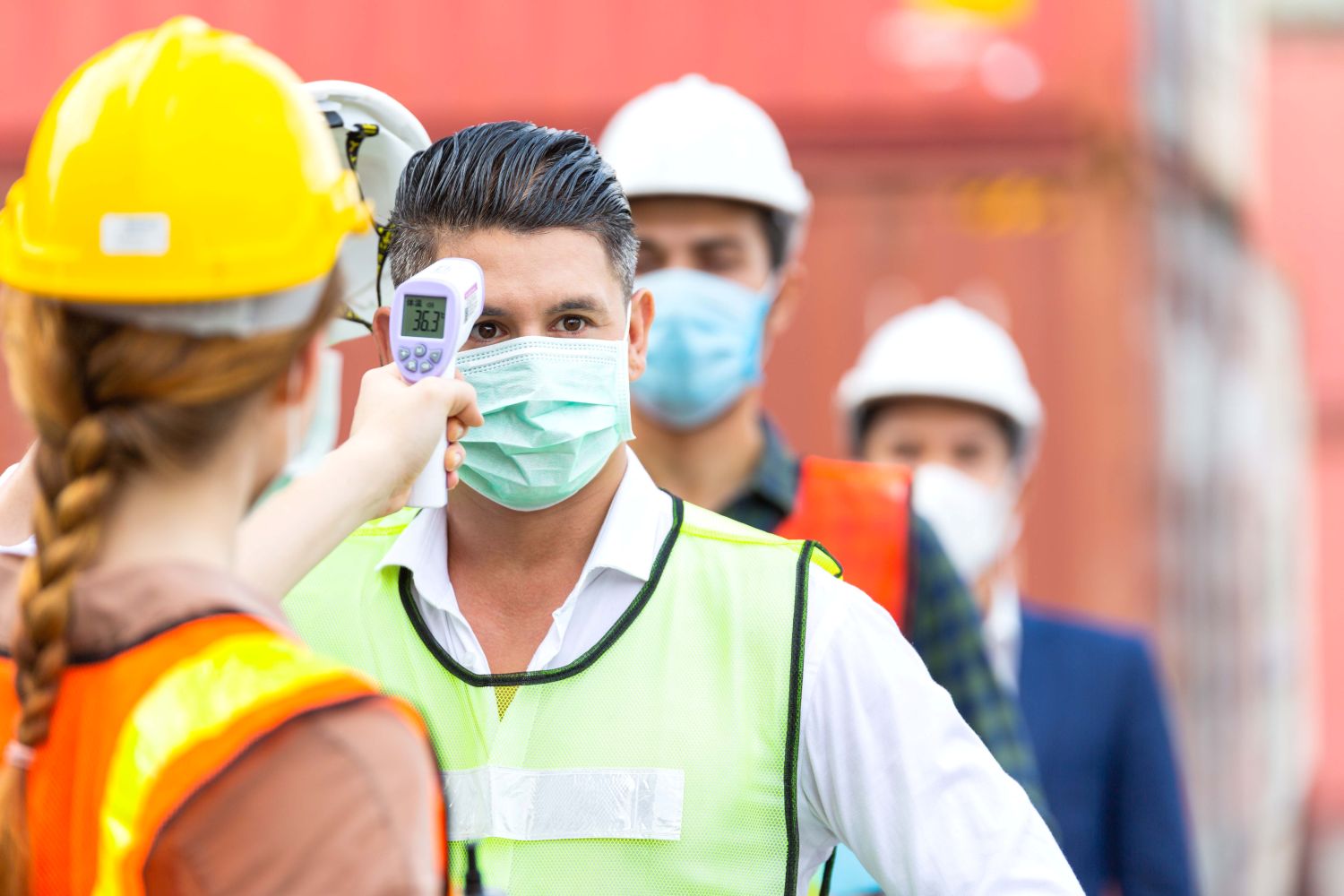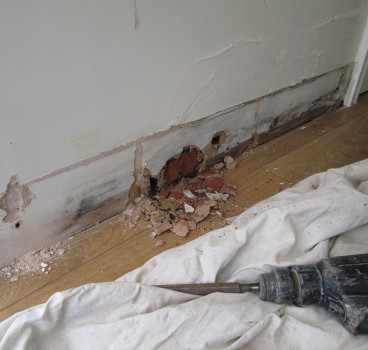Lessons learned from construction during the global lockdown
When the world stopped in 2020, something extraordinary happened. For the first time in living memory, human activity retreated on a global scale — a moment scientists later called the Anthropause. While nature reclaimed quiet streets and skies, the construction industry faced its own reckoning. Projects froze, materials vanished and long-held assumptions about how we build, supply and sustain our built environment were turned upside down. However, in spite of the struggle, the industry found something else - innovation. From digital transformation to sustainable reinvention, construction emerged from the Anthropause not just changed, but wiser writes John Ridgeway.
Before 2020, the global construction industry employed more than 200 million people and contributed roughly 13% to global GDP - then came COVID-19. Sites closed. Borders shut. Shipping containers were stranded in ports or in the wrong hemisphere. Demand for materials swung violently - plummeting in one country while surging in another. In the UK, nearly 60% of building projects ground to a halt in the first months of lockdown. Globally, the disruption cut supply chain reliability by more than half.
For the first time, the industry had to confront what it truly means to pause. But in that pause lay a revelation - which showed how deeply interconnected, fragile and energy-intensive construction had become. And, more importantly, how much room there was for reinvention.
From global to local
The construction supply chain before the pandemic was built for speed and cost-efficiency, not resilience. Materials like timber, glass and steel could travel thousands of miles before reaching a job site. When that system broke, many contractors were left scrambling. In response, a quiet revolution began - one that continues to shape how we source and build today.
Contractors started to think local again. Instead of relying on distant suppliers, they began seeking regional producers and smaller networks. For example, in the UK and Northern Europe, the use of locally sourced timber surged by over 30% between 2021 and 2023. Architects began specifying materials available within a 500-mile radius, cutting both emissions and vulnerability to disruption.
This movement towards localisation didn’t just keep projects moving, it revived forgotten crafts, regional materials and a renewed sense of community between builders and suppliers. In many ways, it marked a return to construction’s roots: building with what you have, where you are.
Digital technology was another key development that came from the lockdown. Before the pandemic, tools like BIM (Building Information Modelling), digital twins and remote site monitoring were slowly gaining ground. But lockdowns forced the issue. Overnight, construction teams found themselves managing projects from home offices, conducting site inspections through drones and 360° cameras and collaborating via cloud-based dashboards.
The construction industry - once stereotyped as slow to change - became one of the fastest to adapt. By 2022, more than 70% of large contractors worldwide had adopted some form of digital collaboration tool, double the rate from just two years earlier. The industry learned that digital doesn’t just complement construction - it sustains it. Today, this transformation continues to redefine efficiency and transparency. Data has become as valuable as steel or concrete. an essential building material in its own right.
The rise of resilient design
When supply chains fractured and workforces thinned, another truth emerged. Developers and architects began rethinking not just how buildings are made, but how they perform when the unexpected happens. Modular and prefabricated construction, once seen as niche, gained mainstream traction. Off-site manufacturing allowed safer, more controlled work environments, fewer site personnel and faster assembly once restrictions lifted.
In parallel, sustainability, long a talking point, became a necessity. With energy prices spiking and emissions under scrutiny, low-carbon materials, circular design and passive energy systems went from “nice to have” to “non-negotiable.”
The Anthropause forced construction to ask deeper questions - what happens when supply stops? When labour is unavailable? When the environment itself becomes volatile? The answers were found in resilient, adaptable, data-driven design.
However, amid the numbers and innovations, the Anthropause was ultimately a human story. Construction is, at its core, about people - the planners, engineers, tradespeople and project managers who turn drawings into reality. The lockdowns exposed not just operational fragilities, but emotional ones. Isolation, uncertainty and burnout rippled through the workforce. Yet, in response, the industry developed a newfound empathy.
Mental health, once a taboo subject on many sites, became central to company culture. Support networks, flexible schedules and wellbeing initiatives began to appear across the sector. For the first time, the concept of safety extended beyond physical protection to include psychological resilience. The industry rediscovered its humanity and in doing so, became stronger.
Redefining collaboration and trust
When teams couldn’t meet face-to-face, communication had to evolve. Collaboration became digital, documentation became transparent and trust - often built through proximity - had to be earned remotely.
The result? A remarkable shift towards openness. Project stakeholders began sharing real-time data rather than waiting for end-of-month reports. Developers, contractors and clients started to see each other less as opposing sides of a contract and more as partners in a shared challenge.
This redefinition of collaboration has persisted. The most successful post-pandemic projects are those built on integrated teams, shared data and collective accountability. The pandemic showed that construction isn’t just about materials - it’s about relationships.
Innovation through constraint
Constraints often fuel creativity, and nowhere was that truer than during the Anthropause. With materials scarce and budgets strained, engineers and builders turned to experimentation. Reclaimed materials, 3D-printed components and hybrid structures became viable alternatives. Urban projects embraced modular retrofits over full rebuilds. Architects began exploring biophilic and adaptive reuse designs that made more from less.
In Africa, for instance, several nations used local soils and natural binders to build durable, low-cost housing during supply shortages, innovations that have since become national building models. In Scandinavia, entire housing estates were planned using fully circular construction principles, proving sustainability could also be scalable.
Before the Anthropause, much of construction’s global narrative also revolved around growth - bigger projects, faster timelines, record-breaking skylines. But after the pause, a quiet change took place.
Developers and policymakers started talking less about volume and more about value. The focus shifted toward buildings that supported community resilience, wellness and sustainability. The question became not “How much can we build?” but “How can we build better?”
Public housing initiatives, healthcare infrastructure and green retrofits took precedence over speculative mega-developments. Governments began linking recovery funding to sustainability metrics, while private clients demanded transparency in carbon impact and supply chain ethics. It marked the beginning of what some have called The Purpose Economy of construction, where success is measured not only in profit, but in positive impact.
The data dividend
As digital tools spread across the industry, one unexpected outcome emerged - a flood of new data. Every project suddenly had measurable insights such as energy efficiency, material use, safety incidents, even behavioural trends. This data, once scattered or ignored, became the foundation for smarter decision-making.
The industry discovered that data, when harnessed properly, turns hindsight into foresight. It allows builders to predict risks before they happen, optimise supply routes before delays occur and design systems that learn from every build. The Anthropause, in essence, made data literacy as vital as construction literacy.
Sustainability Becomes Strategy
Before the pandemic, sustainability was also often seen as a CSR checkbox - important, but secondary. That changed rapidly when global supply shocks exposed the environmental and economic fragility of business as usual.
By 2023, the majority of top-tier contractors had committed to net-zero pathways. Renewable energy integration, embodied carbon tracking and circular economy principles became part of daily operations. The lesson was clear - sustainability is not a cost - it’s a strategy for survival.

Governments responded, too. In the UK, initiatives like the Future Homes Standard and revisions to Part L have cemented the shift toward high-performance, low-emission building. Across Europe, the construction sector’s green recovery has become one of the largest sources of employment growth. The Anthropause didn’t just pause construction - it recalibrated its moral compass.
Every disruption leaves a legacy. For construction, the Anthropause highlighted a truth that will define the next generation of projects, that resilience must be built in from day one. Whether it’s pandemics, resource scarcity, or climate volatility, the new normal demands flexibility. Builders are now modelling for risk, simulating supply interruptions and designing adaptable logistics. Data-driven forecasting and digital twins are helping organisations anticipate rather than react.
Cultural change
However, perhaps the most profound lesson of all is cultural. The Anthropause forced an industry known for toughness and tradition to embrace vulnerability and reflection. It revealed that progress isn’t only about concrete and steel, but about adaptability, empathy, and vision.
From global giants to local trades, the construction community proved that innovation can thrive even under constraint. The people who build our world showed they can rebuild their own systems, values and priorities when needed.
Maybe, that cultural shift from reactive to reflective, from siloed to collaborative - is perhaps the Anthropause’s greatest legacy.
The Anthropause will be remembered as the moment the world’s noise dimmed and in that silence, construction listened. It heard the echoes of fragility, but also of possibility. The cranes may have paused, but the learning never stopped.
Additional Blogs

How construction can cut Its carbon footprint by caring for soil
Soil is often dismissed as mere dirt, but it is one of the planet’s most powerful carbon stores, holding more than all of the world’s forests combined. Yet in our rush to build, pave and develop, we...
Read moreWhat is bridging damp? How it happens and how to fix it
Bridging damp happens when moisture finds a path around the building’s damp-proof course (DPC) so it reaches your internal walls and skirting. If you see damp patches rising above the skirting or...
Read more

The silent death of the fixed-price contract
For decades, the fixed-price contract has been the backbone of construction procurement. It promised certainty with a defined scope, an agreed sum and a clear transfer of risk from client to...
Read more